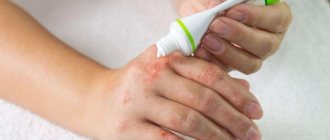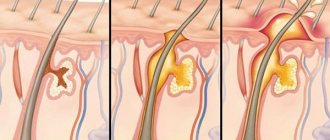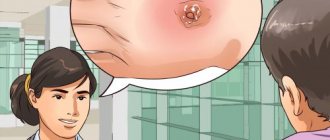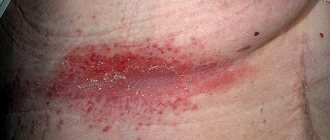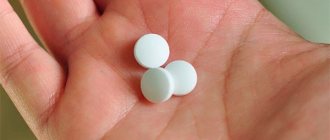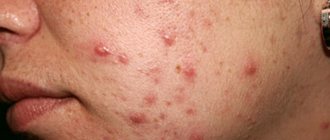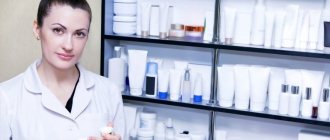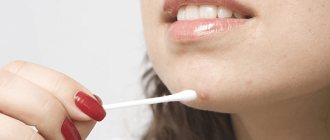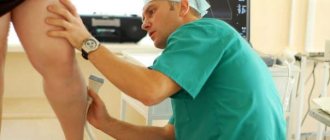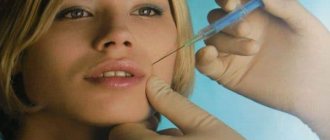Levomekol is a drug that reduces the inflammatory manifestations of purulent-necrotic diseases, destroys bacteria at the site of infection, and increases the regenerative functions of the skin. A cheap, accessible, high-quality drug helps to cure many dermatological and surgical pathologies. Levomekol draws out pus from new and old inflammatory lesions on the skin.
10 best ointments for purulent wounds: Vishnevsky ointment
An external antiseptic that draws out suppuration and promotes the breakthrough of painful formations with their subsequent accelerated regeneration. The drug is described as an ointment for purulent, non-healing wounds. In medicine it is called more precisely - balsamic liniment according to Vishnevsky.
The product is used:
- in the treatment of carbuncles, boils, abscesses;
- in the treatment of wound surfaces of burn origin;
- in the treatment of lymphadenitis, purulent wounds.
Use for non-healing wounds - if the disease is accompanied by an accumulation of pus, then the ointment successfully draws out the purulent contents from the wound. The composition is used only externally in the form of applications, dressings, compresses and drying tampons.
Too long use of the ointment provokes excessive dryness of the treated surface and the appearance of pronounced redness in the folds of the skin.
Balsamic liniment has a very unpleasant smell and causes irritation at the site of its application.
Vishnevsky ointment successfully draws purulent contents from the wound
The ointment is applied to gauze, which is applied to the festering wound. The top of the napkin is covered with cotton wool and fixed. Average price from 36 rub.
Treatment of chiria
As a result of the spread of infection and under the influence of provoking factors, a focus of pathology is formed locally, prone to rapid maturation. Soon an abscess becomes noticeable on the surface of the epidermis; the presence of the head of the boil indicates the need to quickly get rid of purulent masses in the shaft. The clinical picture is complemented by the presence of pain and hyperemia of the skin against the background of progressive inflammation. Below are the recommendations of dermatologists when diagnosing furunculosis:
- Forced opening of an abscess is strictly contraindicated, since it can only aggravate the clinical picture and provoke the addition of a secondary infection.
- The general symptoms of intoxication that accompany the boil must be treated with conservative methods, depending on the specific complaints of the patient.
- Drug therapy should be aimed not only at the productive removal of necrotic masses, but also at accelerating the process of maturation of chiria.
Ichthyol ointment
A traditional remedy for the treatment of purulent wounds is an active substance that exhibits anti-inflammatory and analgesic properties on the deep layers of soft tissue. Providing a therapeutic effect, it has a keratostatic and antipruritic effect.
As an antiseptic:
- draws pus from under the skin in case of any wounds and inflammations;
- relieves inflammation and softens the upper layer of the epidermis;
- used for purulent formations and inflammations;
- used for skin infections;
- for abscesses it is used to accelerate the maturation of boils.
Ichthyol ointment is not applied to an open wound.
When treating purulent wounds, they are covered on top with sterile gauze or a napkin and the bandage is secured with a medical bandage. The bandage is replaced with a new one after 8-10 hours.
Ichthyol effectively eliminates infection from the inflamed skin surface
Pharmacists do not recommend using the ointment for children under 6 years of age. Allergic reactions occur extremely rarely against a dispersive background. In pharmacies the price starts from 64 rubles.
How to quickly cure an abscess on a finger near the nail or panaritium
The inflammatory process and abscess on the finger are provoked by various pathogens that penetrate the soft tissue. Most often these unpleasant conditions are caused by staphylococci.
An abscess on the finger that causes swelling, redness and purulent inflammation of the periungual fold is called paronychia.
When the inflammatory process develops further and spreads to other areas of the finger, they speak of panaritium .
Types of abscesses on fingers or toes
Paronychia
A mild form of finger ulcer, or paronychia, occurs when pathogens enter the skin. During the course of the disease, infiltrative and purulent stages .
Paronychia begins with redness and swelling of the skin around the nail. Then a pain syndrome occurs, the appearance of intercellular fluid containing microbes.
As the infiltrate accumulates, a vesicle is formed, the contents of which become purulent. The following types of paronychia are distinguished: 1 .
Paronychia of acute and chronic nature - depending on the duration.
Subepidermal paronychia
Acute paronychia occurs suddenly and is characterized by severe pain in the area of suppuration. Typically, this type of paronychia is caused by a bacterial infection - Staphylococcus aureus after injury to the upper phalanx (damage to the cuticle).
The chronic form manifests itself gradually : first, the skin around the nail turns red, the finger swells, and pain in this area occurs. 2. Paronychia is superficial (subepidermal) and deep , affecting the thickness of the nail fold near the base of the nail.
These varieties differ in localization and clinical course.
With subepidermal paronychia, pus accumulates under the epidermis near the edge of the nail fold. Panaritium occurs when paronychia is treated incorrectly.
The following varieties are distinguished:
| Type of panaritium | description |
| Cutaneous panaritium | Occurs on the back of the finger. With this disease, pus accumulates under the epidermis, resulting in the formation of a vesicle with a cloudy liquid, often mixed with blood. The skin turns red, the pain syndrome is mild, and sometimes a burning sensation is felt. An enlarged vesicle indicates that the inflammatory process is developing in deeper tissues and the disease is progressing. |
| Periungual felon (paronychia). | described above |
| Subungual panaritium | Inflammatory process in the tissues under the nail plate. It develops when pus penetrates under the nail. The cause of the development of such a disease may be a splinter getting under the nail plate or an injection. |
| Localization of subcutaneous panaritium | Palmar surface of the finger. Inflammation occurs under the skin. The pus formed there cannot break through the thick enough skin in this part of the finger and come out, so the inflammatory process goes deeper - tendons, joints and bone tissue are affected. |
| Bone panaritium occurs when the bone of the finger is affected. | This occurs when the infection directly penetrates into the bone tissue (open fractures with infection) or when the purulent process spreads to the bone from the tissues surrounding it. |
| Articular felon is called purulent arthritis of the interphalangeal joint | This disease occurs due to the direct penetration of infectious agents into the joint cavity, as well as due to the prolonged course of subcutaneous panaritium. This type of panaritium is manifested by a sharp limitation of the motor functions of the joint, pain during palpation and movement of the finger. |
| Tendon panaritium is also called tenosynovitis. | This is a rather serious disease that leads to long-term limitation of the functioning of the hand. With such panaritium, swelling occurs, the finger takes a bent position, and movements are limited. Tendon panaritium differs from its other varieties in its severe pain syndrome. |
Causes of a sore finger near a toenail or hand nail
Improper manicure as a cause of paronychia
One of the most common causes of inflammation of the finger in the nail area is incorrect performance of pedicure and manicure.
Careless actions can damage the cuticle and provoke an inflammatory process with further accumulation of pus around the nail. Typically, such inflammation is caused by streptococcal and staphylococcal microorganisms that live on the skin of every person.
The development of the inflammatory process is influenced by certain conditions, such as:
- decrease in the body's immune forces
- presence of severe concomitant blood diseases
- metabolic disorders.
- fungus on the feet or nails.
Most cases of felon development occur after injury to the skin on the fingers. Moreover, the inflammatory process can occur even due to minor injuries - abrasions, scratches or splinters, cracks due to the skin being too dry and flaking.
An infection penetrates the skin, which gives rise to purulent inflammation. For this reason, even minor wounds should be immediately treated with alcohol-containing solutions or iodine.
Hangnails can also cause inflammation and the formation of pus in the tissues of the finger near the nail.
Source: https://nails-health.ru/naryv-na-palce-panaricij-lechenie/
Streptocide
The effectiveness of the active substance of the drug has no analogues. Streptocide is destructive against microorganisms, gram-positive and gram-negative cocci, spherical bacteria.
Streptocide ointment
Applicable:
- in the treatment of purulent wounds, infected burns;
- for the treatment of sore throat, cystitis, pyelitis, enterocolitis, and infectious diseases;
- for the prevention and treatment of wound infections.
The powder is applied either directly to the wound or sprinkled on gauze, which is used to cover the wound surface and left on the skin overnight or for several daytime hours.
Development of side effects:
- depression;
- headache;
- hematuria, blood in the urine;
- fever, jaundice;
- intestinal colic;
- megaloblastic anemia;
- crystalluria, salt crystals in the urine;
- dyspepsia, belching, constipation, diarrhea, heartburn.
The cost of streptocide is from 80 rubles.
"Levomekol"
This is one of the most effective and popular drugs used for furunculosis. An ointment that draws pus from a boil has anti-staphylococcal and anti-inflammatory effects. In addition, it promotes faster healing of scars.
Immediately after application, the components of the ointment penetrate deeply into the very source of inflammation and begin their antibacterial effect. As a result, the itching sensation soon disappears and the pain subsides.
Treatment with the drug is carried out until the wound left after suppuration completely disappears. It is recommended to change the dressings containing the medicine twice a day.
Usually the medication has no side effects, so it is well tolerated and can be used in therapy even in children according to a doctor’s indications.
10 best ointments for purulent wounds: Syntomycin ointment
Syntomycin liniment is a thick gelatinous composition. The composition of the drug is not an ointment.
Ointment:
- allows you to stop the inflammatory process, remove swelling;
- used for burns of various sizes and degrees;
- promotes the regeneration of infected wounds, injuries and burns, frostbite, which are associated with infection.
When applying the ointment to large areas of the body, alcohol consumption can initiate tachycardia, heart rhythm disturbances, and convulsions.
Syntomycin ointment is often used for burns of various sizes and degrees.
Turundas made of gauze soaked in synthomycin are placed in the fistula passages. Tampons with the drug are injected into the cavity of the purulent wound for a therapeutic effect. The frequency of treatment and the frequency of application of the ointment depend on the degree of skin inflammation and the concentration of the drug itself.
The average price in pharmacies is 75 rubles.
Provoking factors
The appearance of boils on the body is caused by the following provoking factors:
- excessive sweating;
- insufficient skin care;
- violation of the integrity of the epidermis.
In the absence of a strong immune status against the background of the above factors, furunculosis begins to develop, the cause of which is the pathogenic proliferation of staphylococcal bacteria.
Mafenide acetate ointment 10%.
Indications for use:
- trophic ulcers;
- purulent wounds;
- infected burns;
- bedsores.
The ointment layer is usually 2-3 mm, the dressing is changed 3 times a week, or, in case of excessive pus, daily.
The antiseptic is applied to the wound, from where it penetrates through areas of the skin with impaired blood circulation into the systemic circulation. In addition to applying the ointment to the wound surface, the drug is injected into the purulent cavity using tampons and applying a bandage.
Before changing the dressing with ointment, if the gauze has dried to the wound surface, it is recommended to soak it with an antiseptic solution. Traumatization of the regenerated epithelium may be accompanied by profuse bleeding.
When combined with other drugs, cross-hypersensitivity with the active components may occur.
In pharmacies from 45 rubles.
Effective local preparations for getting rid of boils and pimples on the face and other parts of the body
Ointment for boils (pulling, wound healing or stopping inflammation) can be used for treatment on any part of the body. However, they should be used on the face with extreme caution and prior consultation with a doctor, so as not to aggravate the situation.
Ointments for acne and boils have a local effect, affecting only the source of inflammation, without further penetration into the bloodstream. Because of this feature, they have a small list of contraindications, often limited only to intolerance to the substances included in their composition.
Levomekol
It is a combined agent that has an antibacterial and healing effect.
The main active ingredients are:
- methyluracil (40 mg per 1 g), which has immunostimulating properties and increases the ability to restore the skin;
- chloramphenicol (7.5 mg per 1 g), which has an antimicrobial effect and destroys pathogenic flora.
The ointment is used at the stage of formation of purulent-necrotic contents of a boil or pimple in the form of superficial dressings or introduction of a wound surface containing pus into the crater (after opening) using a catheter. Treatment is carried out for 7 to 10 days, applying bandages to dry, cleansed skin 2 times a day.
An absolute contraindication for use is children under 1 year of age and individual intolerance to the components of the drug. Relative contraindications include pregnancy and lactation. The cost of Levomekol ointment varies between 105 - 140 rubles.
Liniment balsamic Vishnevsky
The ointment, consisting of natural components and having a specific odor, is used in the treatment of any skin diseases of infectious and inflammatory origin (boils, acne, bedsores, burns and ulcers) due to its wide spectrum of action, as:
- antimicrobial agent;
- wound healing drug;
- disinfectant.
100 g of ointment contains:
- 3 g xeroform - an antiseptic substance with a drying effect;
- 3 g of tar, which accelerates the ripening process of the boil.
Since its components have softening properties, the ointment is recommended for use at stages 1, 3 and 4 of the development of the boil (with the exception of the period of ripening of the rod), in order to avoid the spread of infection. The ointment, as in the previous case, is applied to the problem area of the skin under a bandage for at least 8 hours. The cost ranges from 25 to 50 rubles.
The only contraindication for its use is hypersensitivity and allergy to the components of the drug.
Baneocin
An antibacterial drug containing 2 antibiotics at once:
- neomycin (5000 IU per 1 g);
- bacitracin (250 IU per 1 g).
The modern product has a wide spectrum of action and actively destroys pathogenic microorganisms, giving a visible effect after the first use. The ointment is used in the treatment of infectious and inflammatory skin lesions (boils, carbuncles, eczema, burns, infected wounds, cuts and abrasions) and for the prevention of infections in the postoperative period.
The composition is applied to inflamed areas up to 2–4 times a day, both under a bandage and without it. The course of treatment is 7 days.
The drug is contraindicated in:
- extensive lesions of skin areas (exceeding the size of a human palm), due to possible intoxication of the body;
- allergies to ointment components;
- combined use with aminoglycoside antibiotics;
- infections of the external auditory canals with disruption of the integrity of the eardrum;
- disorders of the excretory system against the background of existing renal or heart failure.
Relative contraindications include:
- presence of neuromuscular diseases;
- pregnancy and lactation;
- disorders of the kidneys and liver.
The cost of the ointment is quite high and ranges from 200 to 480 rubles.
Tetracycline ointment
Another antibacterial drug, distinguished by its versatility and budget price (from 30 rubles), the main active ingredient of which is tetracycline (30 mg per 1 g of ointment).
The ointment is indicated for:
- purulent skin infections;
- eye infections (there is a less concentrated eye ointment);
- for preventive purposes after surgery.
It is used after a boil breaks out, up to 5 times a day, applied under a bandage for 3–4 hours. The duration of treatment is 7–14 days.
Contraindications:
- liver diseases;
- pregnancy and lactation;
- intolerance to components;
- mycoses;
- leukopenia.
The ointment has age restrictions and is approved for the treatment of children over 8 years of age.
Ichthyol ointment
Ointment for boils, which draws out pus and relieves inflammation, has an additional analgesic effect and can accelerate tissue regeneration. The main active ingredient is natural ichthyol, obtained from shale coke resins. Therefore, the ointment has a distinct, specific sulfuric odor.
It is used for boils, acne, ulcers, eczema, burns, dermatitis, arthritis and has virtually no contraindications, with the exception of increased sensitivity to ichthyol.
To effectively treat boils, apply the ointment under the bandage for at least 8 hours, leaving the compress on all night. It can be used both to accelerate the maturation of the rod and to stretch it during a breakthrough. The average cost of the ointment is 30 - 50 rubles.
Triderm
A combination drug that combines antibacterial, anti-inflammatory and antiallergic properties.
It contains 3 main active ingredients:
- antibiotic gentamicin (1 mg in 1 g ointment);
- clotrimazole (10 mg per 1 g) – antifungal component of the drug;
- betamethasone (643 mcg) relieves inflammation and has an anti-allergic effect.
The drug is used in the treatment of:
- dermatitis of various etiologies;
- boils and ulcers;
- dermatomycosis;
- eczema;
- chronic lichen.
The ointment is applied in a thin layer to the affected area and adjacent tissues up to 2 times a day, the course duration is from 7 to 14 days.
The product has a number of contraindications and is prohibited if:
- herpes;
- skin tuberculosis;
- the presence of open wounds in the area of inflammation;
- hypersensitivity to the components of the drug;
- syphilis;
- chicken pox.
It is not recommended to use the ointment for children under 2 years of age, as well as for pregnant and lactating women.
The cost of the drug ranges from 600 to 950 rubles.
Heparin ointment
It has antimicrobial, anti-inflammatory and antiseptic properties, and provides an analgesic effect. The ointment promotes vasodilation, preventing the formation of blood clots.
1 g of the drug contains:
- 100 IU of sodium heparin, which acts as a coagulant to prevent blood clotting;
- 800 mcg of benzyl nicotine, which has anesthetic properties;
- 40 mg of benzocaine, which activates blood flow and dilates blood vessels.
It is advisable to use heparin ointment during the formation of the rod to speed up its ripening and emergence. It is applied in a thin layer to clean skin up to 3 times a day. The duration of treatment can be up to 2 weeks.
In addition to treating boils and ulcers, the ointment is used for:
- bruises, hematomas, swelling and injuries;
- thrombophlebitis and varicose veins;
- superficial mastitis;
- hemorrhoids;
- trophic ulcers.
At the same time, it has a number of contraindications:
- children under 2 years of age;
- open wound surfaces of the skin;
- problems with blood clotting;
- ulcerative-necrotic processes.
The cost of the drug ranges from 40 to 90 rubles.
Syntomycin ointment
Antibacterial liniment with an anti-inflammatory and drying effect, used to accelerate the maturation of the rod and draw out pus.
The main active ingredient of the drug is chloramphenicol, a broad-spectrum antibiotic, the resistance of pathogenic microorganisms to which is weakly expressed. It is applied until the boil opens once a day. The best effect is achieved when applied under a bandage, which can be left on the affected area for a day.
The ointment is used for a variety of purulent lesions of the skin:
- burns of II and III degrees;
- furunculosis;
- trophic ulcers;
- any purulent wounds;
- acne.
Contraindications to the use of the drug:
- fungal skin diseases;
- eczema;
- liver and kidney diseases;
- blood diseases;
- lack of glucose in the body;
- sensitivity to the components of the drug.
The use of ointment is unacceptable for infants in the first month of life, during pregnancy and breastfeeding. Its cost is 33 – 90 rubles.
Oflokain
Anti-inflammatory ointment with antibiotic, which has an analgesic effect due to the main components included in its composition:
- lidocaine;
- ofloxacin.
The ointment relieves pain, swelling and itching well at the initial stage of inflammation (before the formation of the rod) and after a breakthrough. It is applied to the affected areas of the skin 1 – 2 times a day under a bandage. The duration of the course is on average 7 days and depends on the complexity of the disease.
The ointment is indicated for:
- purulent wounds and inflammations;
- bedsores;
- burns;
- boils and ulcers;
- infected skin lesions;
- after limb amputation.
The use of ointment is contraindicated in the presence of hypersensitivity to the components, during pregnancy and breastfeeding. The cost of the drug is 140 – 350 rubles.
Levosin
In terms of the method of action and composition, it is often compared with the drug Levomekol. However, unlike the latter, Levosin contains another type of antibiotic (in addition to chloramphenicol) - sulfadimethoxine, as well as a low-toxic anesthetic substance trimecaine.
Therefore, Levosin is a more concentrated antibiotic that has an additional analgesic effect. Otherwise, these ointments are identical in method of application, indications and contraindications. The cost of the drug is from 65 to 85 rubles.
Streptocide ointment
Antimicrobial ointment, which is based on a broad-spectrum antibiotic - sulfanilamide (10 g per 100 g of the drug).
It is used in the treatment of:
- various ulcers;
- purulently infected inflammations and wounds;
- burns of I and II degrees;
- cracks in the skin.
For boils, the ointment effectively copes with the infection during the healing period and promotes the regeneration of skin cells. Bandages with the drug are applied to the affected area up to 3 – 4 times a day.
Contraindications to the use of ointment are:
- kidney and blood diseases;
- nephrosis;
- lack of glucose;
- sensitivity to the components of the drug;
- anemia;
- thyrotoxicosis;
- porphyria;
- nephritis;
- period of pregnancy and breastfeeding.
The cost of the ointment is from 55 to 100 rubles.
Sulfuric ointment
The drug is produced on the basis of precipitated sulfur, which, upon contact with the skin, forms pentathionic acid and sulfide compounds that have antimicrobial and antipruritic properties.
The ointment is used for boils, acne, ulcers and scabies. For boils, the composition is applied to the affected areas of the skin after opening the abscess. It has a rather weak antimicrobial effect (compared to other ointments), but is capable of accelerating tissue regeneration during the recovery period.
Most often, sulfur ointment is used in the treatment of acne and acne. The only contraindication for use is sensitivity to sulfur preparations. The cost of the product is low - from 23 to 50 rubles.
Ointment for the treatment of boils is a universal remedy, represented by a wide variety of drugs on the drug market, and is used at all stages of treatment of abscesses for disinfection, elimination of infection and drawing out purulent-necrotic contents. The main rule for using any ointment is that the effect is consistent with one or another stage of development of the boil.
Author: Anna Lalochkina
Article design: Vladimir the Great
Hyoxysone
An external preparation of a transparent or whitish color of uniform consistency for external use. The ointment is a combined preparation, the active components of which have anti-inflammatory, regenerating, and antibacterial properties.
Hyoxysone ointment
Indications for required use:
- ulcers with varicose veins;
- wounds with the addition of bacterial inflammation;
- infected burns;
- pustular processes on the skin;
- erysipelas of any localization.
When using hyoxyzone with purulent wounds, the following must be considered . Do not apply ointment to the bleeding surface. For mild pustular processes, the drug should be applied frequently and in a thin layer, at least 4 times a day. The use of the ointment kit over large areas without the advice of a specialist is not recommended.
Contraindications for use:
- fungal infection on the skin;
- intolerance to any ingredient in the complex;
- allergy to a component of hyoxysone;
- redness and burning at the site of application for sensitive skin;
- pregnancy and lactation.
Long-term use of the medication, as well as its application to large inflamed surfaces, can lead to side effects.
The price in pharmacies ranges from 32 to 54 rubles per pack.
Instructions for use
Regardless of the direction of the drug, there are instructions for using ointments:
- Chiria ointment is applied to a clean, dry surface;
- during application, avoid contact with mucous membranes of the body;
- It is recommended to apply the product using a cotton swab;
- when treating under the arms, avoid deodorants and shaving;
- Before use, consult your doctor;
- study the package insert for a specific drug;
- if there is sensitivity, choose another drug;
- use medications only as prescribed;
- do not exceed the permissible course of treatment.
Before use, you need to understand the principle of operation. It is unacceptable to apply pulling ointments to a boil that has broken out. Healing drugs will be useless during the healing stage. You need to be careful when treating tumors in the intimate area. In order not to harm your own health, you should consult a doctor before treatment at home.
Furuncle: symptoms
Boils on the face are most often located in the upper or lower lip area. Less commonly, a boil may occur in the ear or nose, or on the skin of the forehead. The most severe boils are those that form in the area of the upper lip, corners of the mouth, as well as in the nose and infraorbital areas (this corresponds to the area of the nasolabial triangle). These areas have a rich blood supply, and therefore thrombophlebitis of the facial veins develops here much more often, which can lead to thrombosis of the cavernous sinus, purulent meningitis and sepsis.
If you have a boil, treatment at the very first stage of inflammation can be carried out at home. At later stages, only surgical treatment is indicated. Next, we will analyze the clinical stages of boil development and the corresponding symptoms. So, if you have a boil, the symptoms of inflammation and patient complaints depend on the stage of the inflammatory process, of which there are three.
Stages of boil formation and their symptoms –
1) At the beginning of its formation, the boil simply resembles a swelling rising above the surface of the skin (soft tissue infiltration). At that stage of development, there is still no pus or necrotic core in it, but the tissues are very dense to the touch, tense, and painful when touched. The skin over the infiltrate has an intense red color (Fig. 8). The general condition of patients at this stage is usually satisfactory, and body temperature usually does not exceed 37.5 degrees
2) At the second stage, which usually occurs after 3-5 days, symptoms of pus formation inside the boil already appear, which leads to an increase in its size. In addition to the increase in the size of the boil, patients note increased pain, which can become throbbing, as well as an increase in body temperature up to 38.0 degrees. In parallel with the formation of pus, a necrotic core is formed, and in this case, white or black dots can be distinguished on the surface of the boil (Fig. 9-10).
Gradually, the pressure of pus on the walls of the boil increases, and this can lead to the fact that it can spontaneously open. In this case, pus will begin to appear on the surface of the skin, and the necrotic core will begin to gradually emerge from the depths of the tissue to the outside (Fig. 11).
3) At the third stage, tissue regeneration begins. This stage begins after the emptying of pus from the cavity of the boil and rejection of the necrotic core. Tissue swelling and inflammation at this stage gradually decreases, and tissue healing occurs with the formation of a small scar. In the next section we will describe in detail how to treat a boil at different stages of the inflammatory process.
